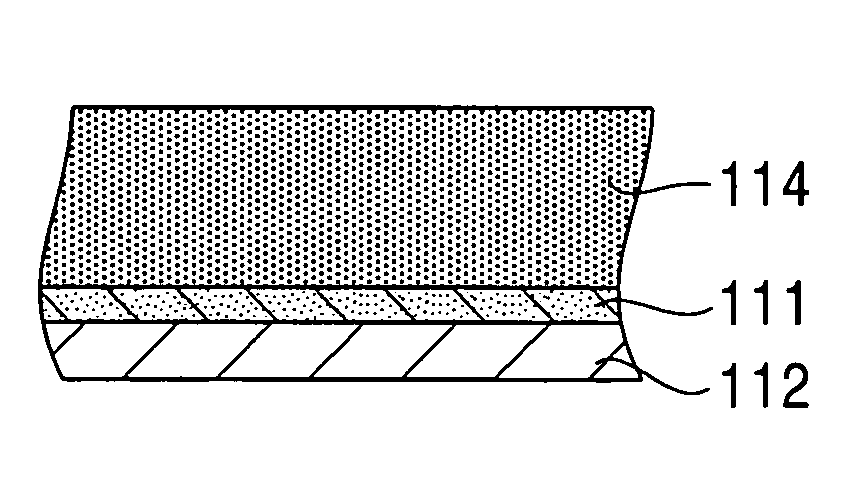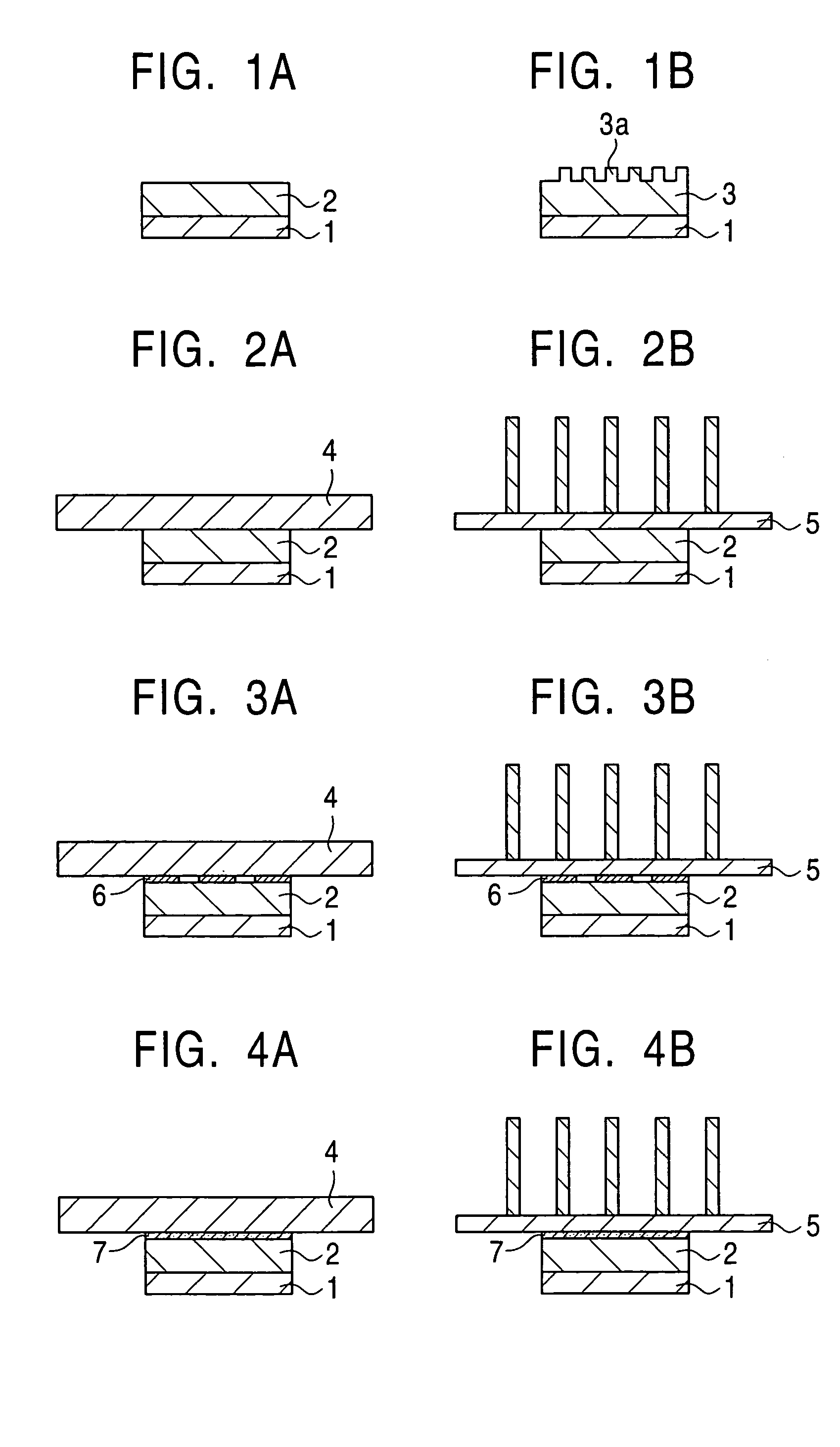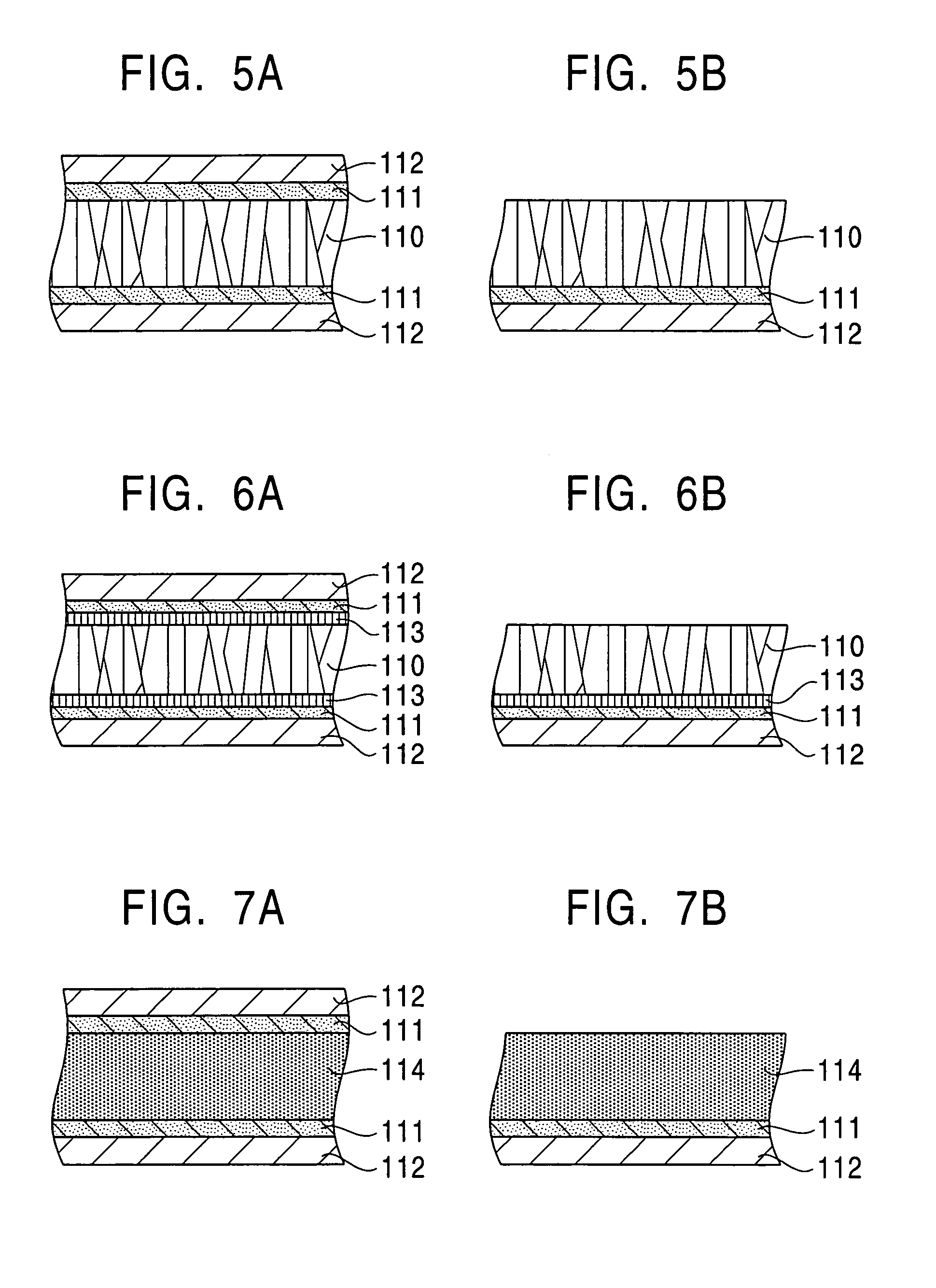Heat spreader and semiconductor device and package using the same
a heat spreader and semiconductor technology, applied in semiconductor devices, semiconductor/solid-state device details, electrical devices, etc., can solve the problems of reducing the reliability of heat sink or radiating fin bonding in a face-down structure, nitride substrate, and reducing the power consumption of semiconductor devices. , to achieve the effect of high thermal conductivity, good air tightness, and large thermal conductivity
- Summary
- Abstract
- Description
- Claims
- Application Information
AI Technical Summary
Benefits of technology
Problems solved by technology
Method used
Image
Examples
example 1
[0076]A diamond layer having a thermal conductivity of 800 W / (m·K) or more was formed on the reverse surface of a silicon wafer by CVD. This diamond layer, which was a microcrystal having a thickness of 0.05 mm, was notched in advance to make the diamond layer discontinuous. These notches suppress warpage of the wafer and facilitate division of the wafer into chips. Then, semiconductor devices were prepared on a surface of the silicon wafer facing away from the diamond layer. Semiconductor chips with a diamond heat spreader were prepared from this silicon wafer. These chips had an external size of 23 mm by 25 mm and a power consumption of 70 W.
example 2
[0077]Resin wiring substrates were prepared with a liquid crystal polymer as a base resin. The resin wiring substrates each had copper foils thermally compressed on both surfaces. One of these copper foils was etched to form a wiring layer having a pattern, and was then coated with an insulating resin. The semiconductor chips prepared in Example 1 were mounted on the resin wiring substrates by wire bonding to form semiconductor packages having a face-down structure. The semiconductor chips each had 478 pins in the semiconductor packages.
[0078]The semiconductor chips in the present invention are not limited to ball grid array (BGA) packages and may be applied to various packages.
example 3
[0079]Ten samples were selected from the semiconductor packages prepared in Example 2. Each heat spreader in these samples was partially coated with aluminum having a thickness of 100 nm to equip the heat spreader with an aluminum radiating fin having an external size of 35 mm by 39 mm. On the other hand, ten additional samples were selected from the semiconductor packages prepared in Example 2. Each heat spreader in these samples was coated with a polymer adhesive on its ciliary surface to equip the heat spreader with the aluminum radiating fin. A heat cycle test was performed on both samples. This test was continued for 500 cycles of −40° C., room temperature, and 110° C. This test showed that the heat spreaders in both samples did not develop cracks or other defects.
PUM
 Login to View More
Login to View More Abstract
Description
Claims
Application Information
 Login to View More
Login to View More - R&D
- Intellectual Property
- Life Sciences
- Materials
- Tech Scout
- Unparalleled Data Quality
- Higher Quality Content
- 60% Fewer Hallucinations
Browse by: Latest US Patents, China's latest patents, Technical Efficacy Thesaurus, Application Domain, Technology Topic, Popular Technical Reports.
© 2025 PatSnap. All rights reserved.Legal|Privacy policy|Modern Slavery Act Transparency Statement|Sitemap|About US| Contact US: help@patsnap.com



